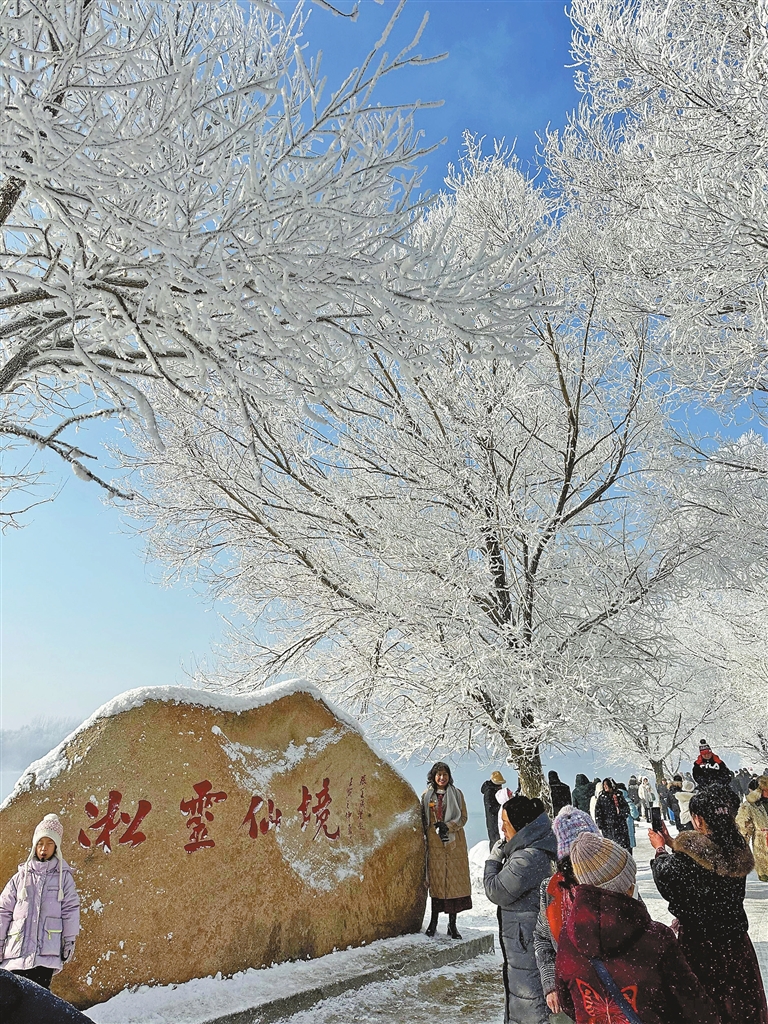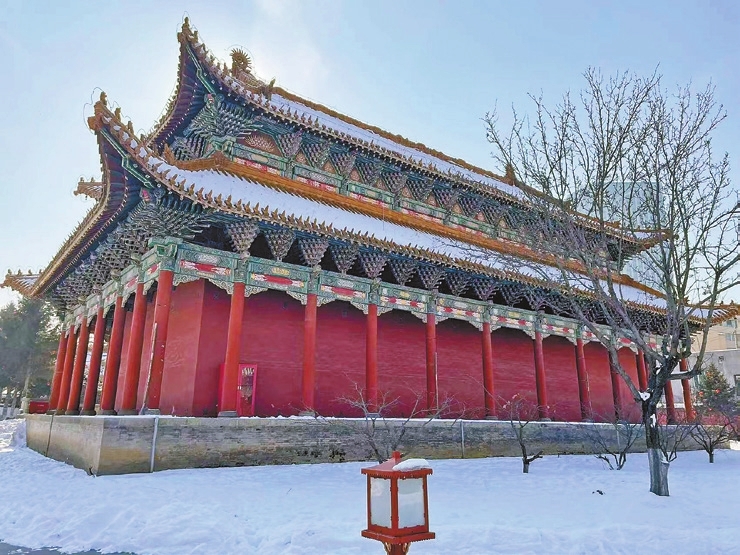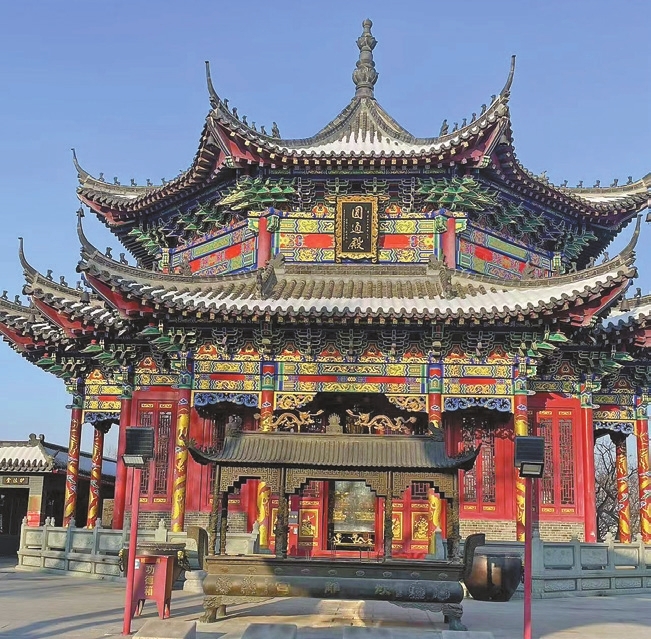




Windy Shao windysjf@hotmail.com ON the first night after experiencing Jilin rime in Northeast China, an image of a winter wonderland filled my mind, with thick white delicate filigrees of ice dancing on trees, when I closed my eyes at night to sleep. The sight is nature’s gift for someone who has lived in concrete jungle for decades. Renowned as one of China’s four natural wonders, along with the Yangtze River’s Three Gorges, the karst formations in Guilin in Guangxi, and the Stone Forest in Yunnan Province, the Jilin rime is a unique winter spectacle. It is characterized by its unusual thickness and frequent occurrence, which result from the area’s distinctive weather and geographical features. Unique formation During extreme cold weather, the rising mist above the unfrozen Songhua River crystallizes into frost flowers on the trees. The main reason why the section of the Songhua River does not freeze in winter is due to the Fengman Hydropower Station’s power generation activities. The station releases hot water into the river, keeping the water temperature around 4 degrees Celsius. This prevents the urban stretch of the Songhua River in the city of Jilin from freezing, even during severe winter conditions, and contributes to the persistent fog on the river. Under specific atmospheric pressures, wind directions, and temperature conditions, the fog above the river cools and condenses rapidly, resulting in the formation of spectacular rime. It blankets the surrounding tree branches, creating unforgettable scenery along the river. With their branches covered in a thick layer of white rime, the trees resemble silver flowers in full bloom. When illuminated by sunlight, the rime glistens with a captivating light, transporting viewers into a fairyland. Compared to rimes in other mountainous areas, the rime in Jilin is more delicate and fluffier, and only lasts for a few hours each time. As the sun rises and temperatures increase at noon, the delicate ice filigrees fall from the trees like snowflakes, creating yet another magnificent spectacle when the wind blows. The best time to witness the rime is usually in January and February when the temperature drops low enough for water vapor to freeze. Visitors can enjoy the rime at various locations in Jilin, including Ashihada Rime Scenic Spot, Rime Island, Songhua Lake, and Beidahu Scenic Area. Among these, the Ashihada spot is the most popular among tourists due to its convenient transportation and the high frequency of rime occurrences. As people walk upstream along the river, the neatly arranged trees offer a splendid rime-filled panorama. Buses are available to transport visitors to the site. Rime Island Another ideal place to view this natural wonder is Rime Island, a small island on the Songhua River. Surrounded by water, this island’s unique location makes it the most famous spot to witness the rime phenomenon. Its geographic placement allows it to be enveloped in thick fog throughout the winter. When suitable weather conditions occur, the island’s trees and plants become coated in delicate ice crystals, creating a breathtaking view. To reach Rime Island, it takes approximately one hour by car from downtown, a distance of about 40 kilometers. For those taking public transportation, they can first go to the coach station or train station in Jilin and then transfer to the island. To fully enjoy the rime experience, my family and I chose to arrive at the site one day in advance and stayed in a local hostel. This decision proved worthwhile as the next morning provided a completely different and more serene experience. It felt as if we were in a fairyland far away from the bustling world. Due to the inconvenient transportation, there weren’t many people around. The trees exhibited various shapes, each exuding its own unique charm. A city rich in cultural heritage Jilin, the second-largest city in the province after Changchun, boasts abundant natural landscapes and profound cultural heritage. Jilin Confucian Temple, one of the four most famous Confucian temples in China, holds a prestigious position alongside those in Beijing, Qufu (Shandong Province), and Nanjing (Jiangsu Province). First built over 300 years ago, it is the first and largest Confucian Temple in Northeast China. Another must-visit site is the Manchu Museum. The Manchu people ruled China for over 200 years and left behind a rich cultural heritage. Visitors can gain an in-depth understanding of Manchu history, culture, and traditions by exploring the museum. Beishan Park, a famous temple garden scenic area, serves as a landmark in Jilin. With a history spanning over 300 years, it features pavilions, bridges, corridors, and temples dating back to the Qing Dynasty (1644-1911). The park blends elements of Buddhism, Taoism, and Confucianism. One of its highlights is the folk temple fair held on holidays, attracting tourists who come to witness various performances, including acrobatics and yangko dance, and partake in various ice experiences. Ski enthusiasts are recommended to visit Vanke Songhua Lake Resort. Compared with the city’s other ski resort in Beidahu, this one offers more affordable restaurants, hostels, and apartments. Additionally, it has professional ski training schools catering to both adults and children. The resort has been awarded the title of “Best Ski Resort in China” for five consecutive years. | 
